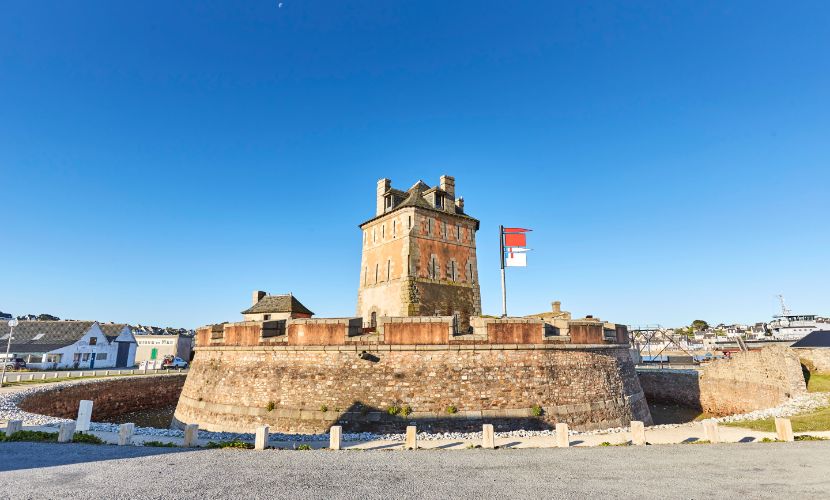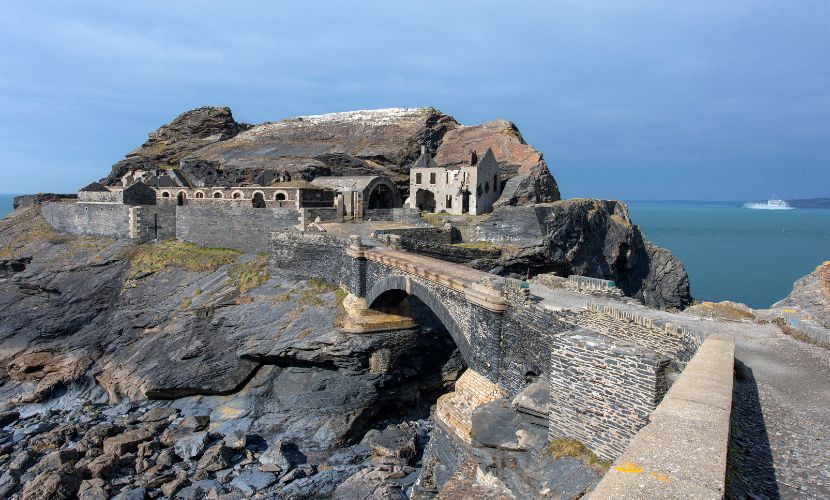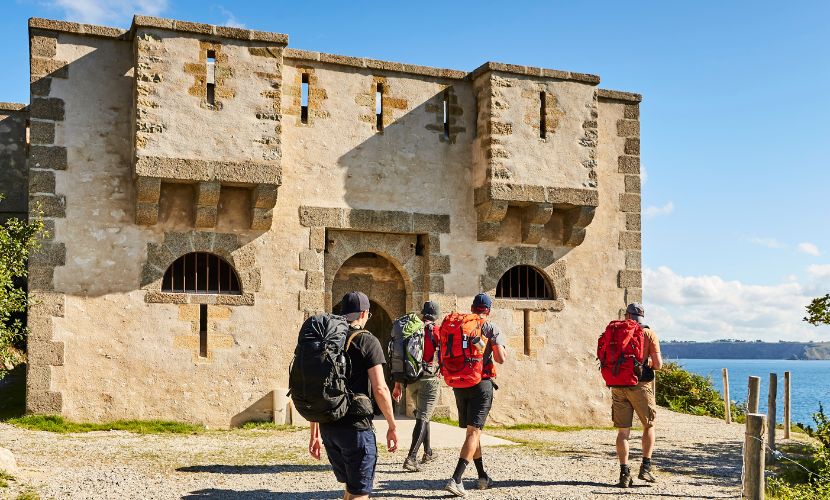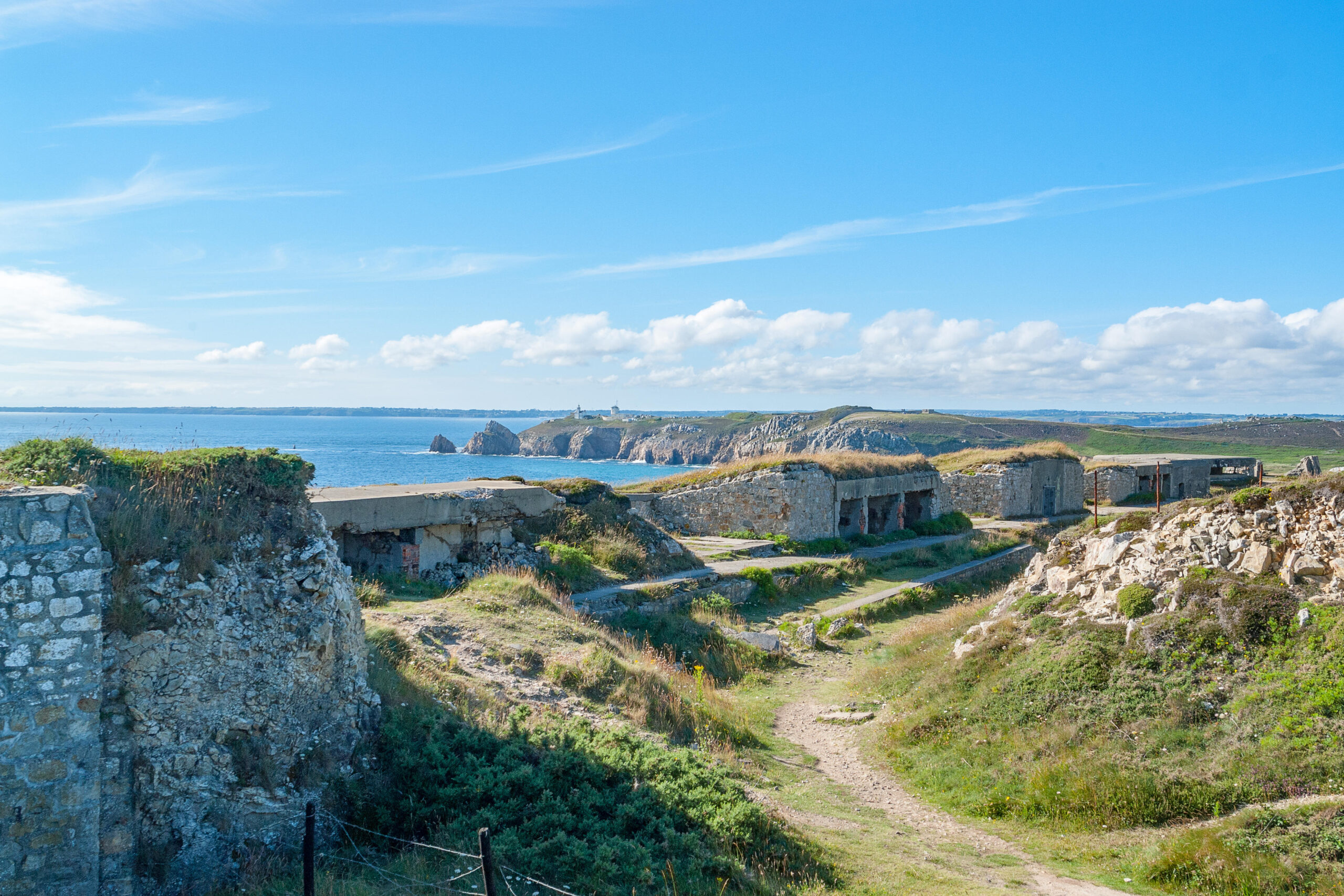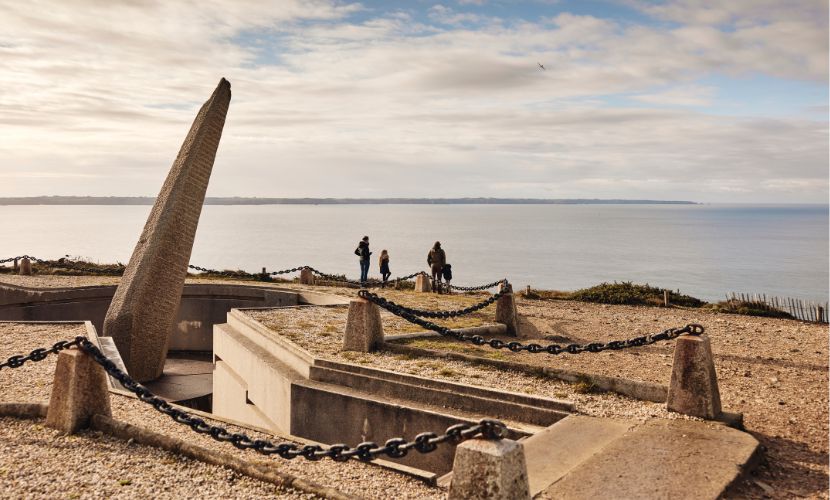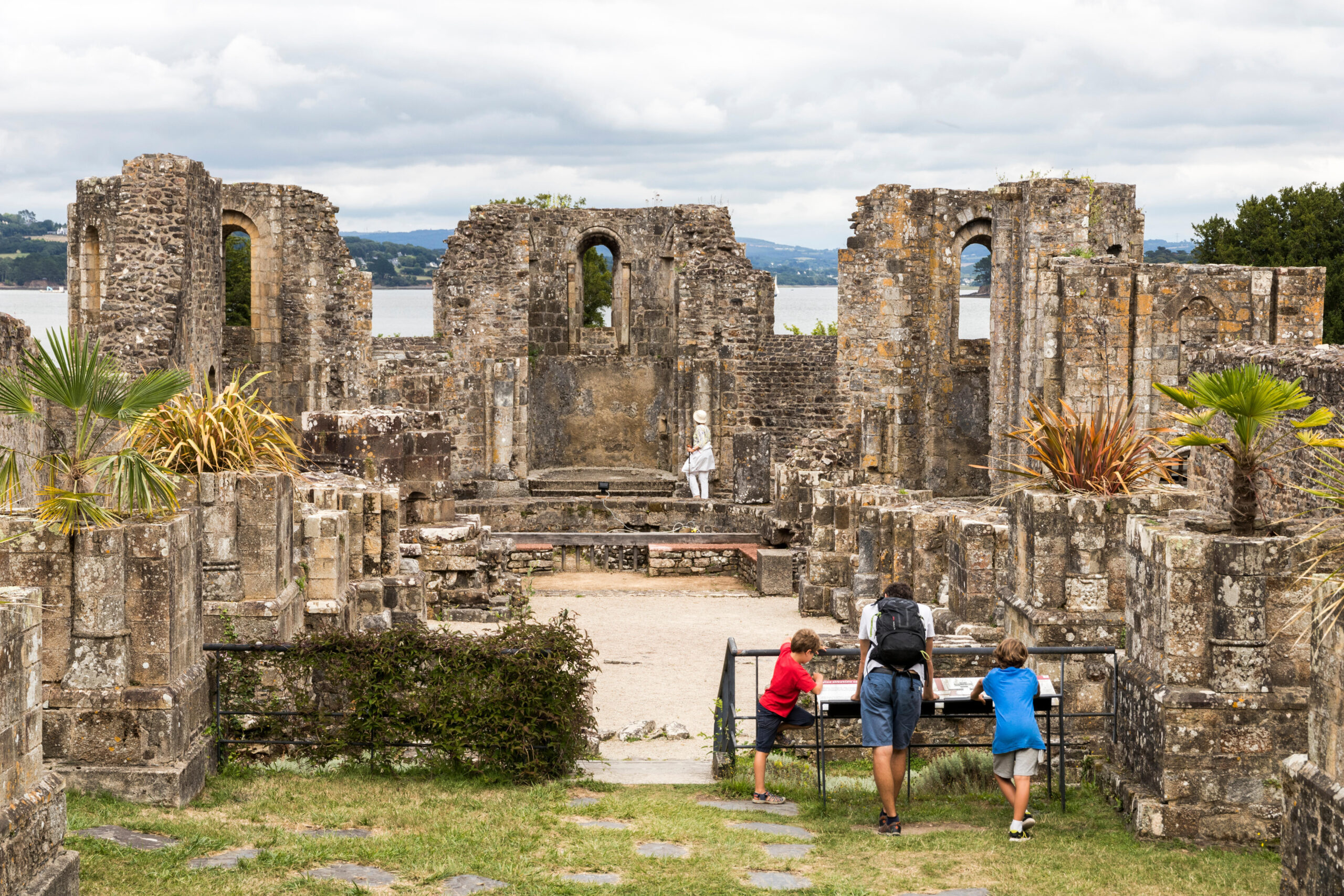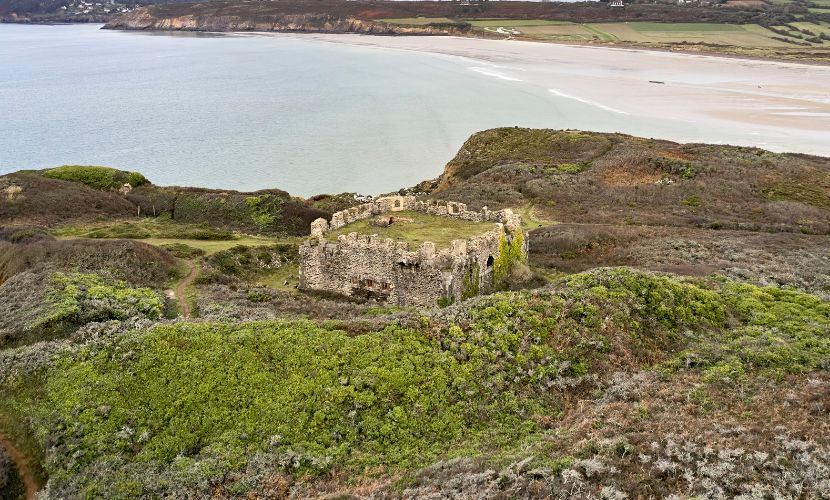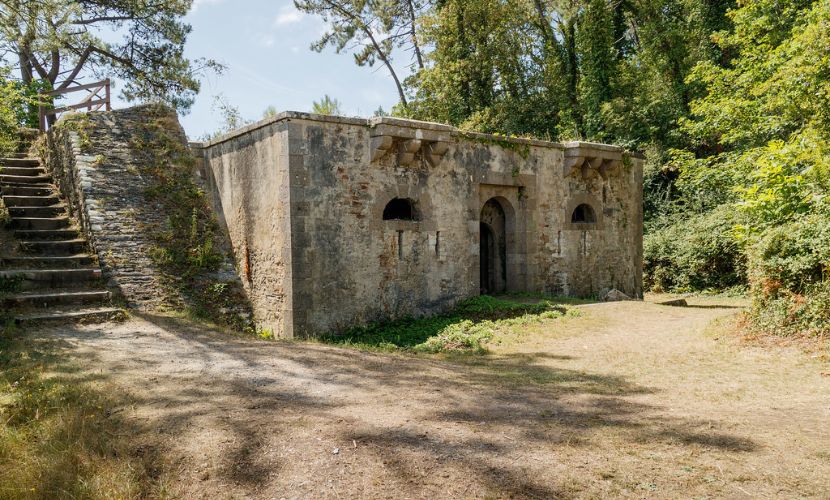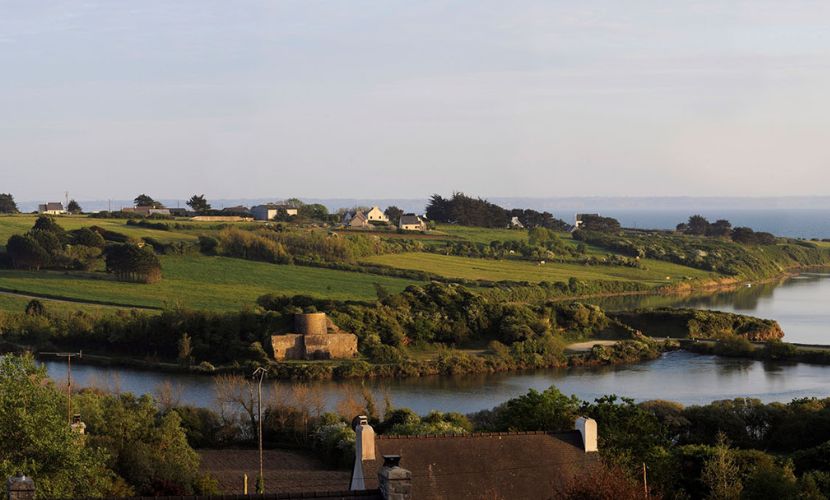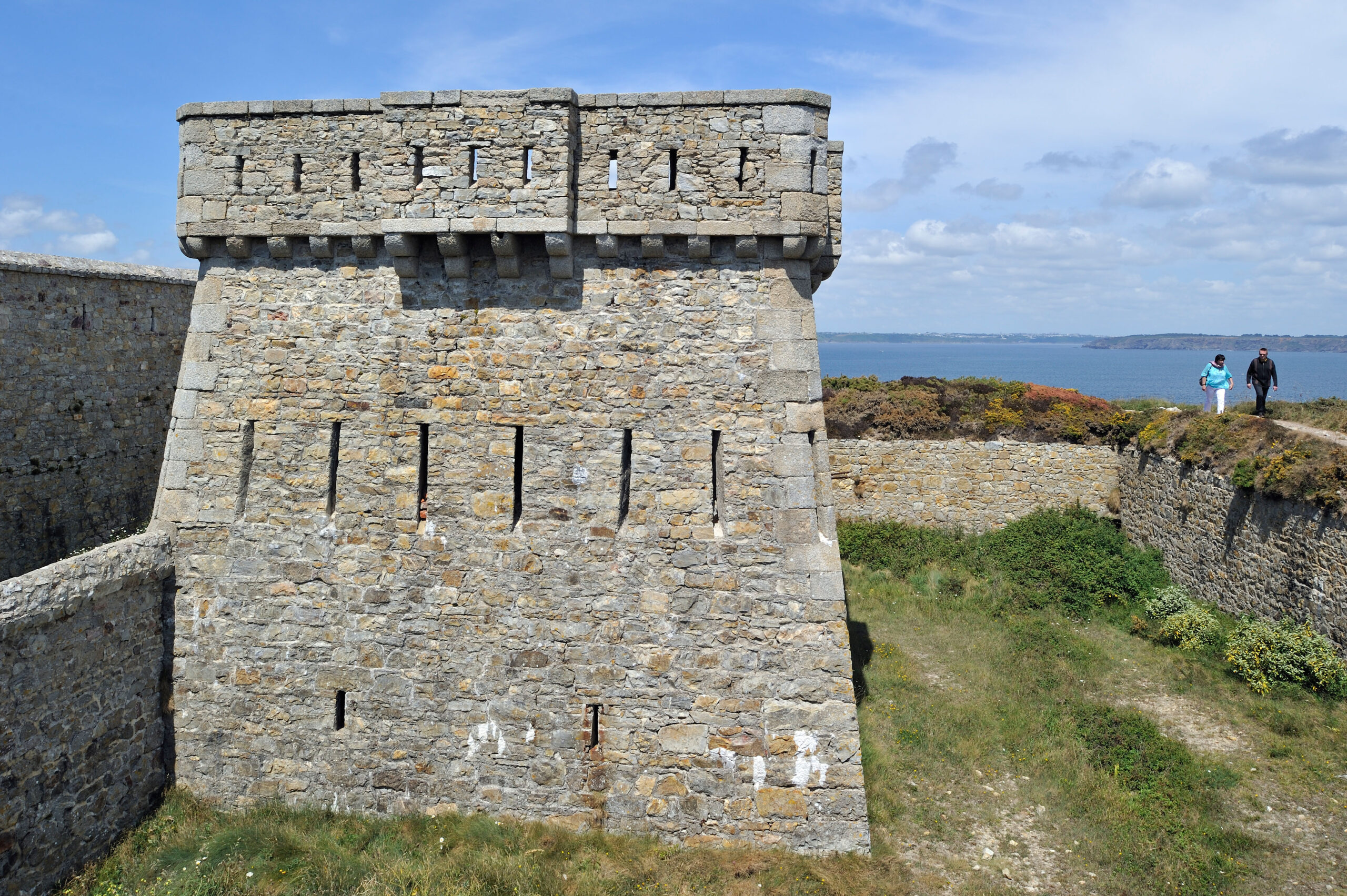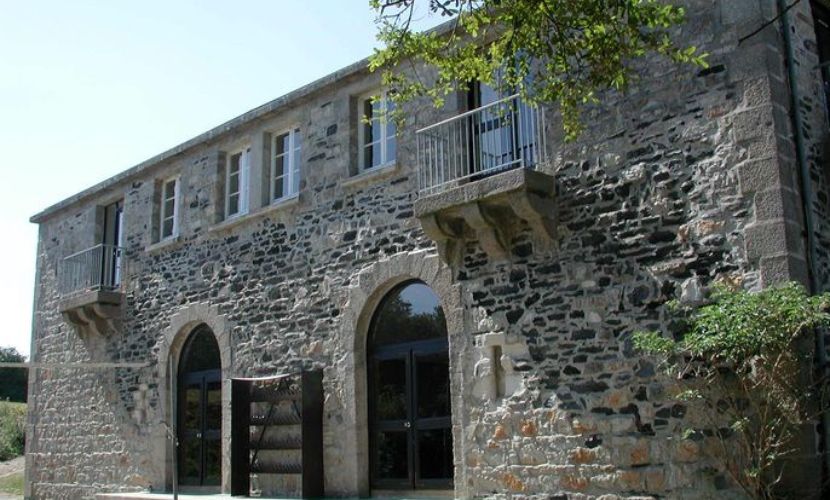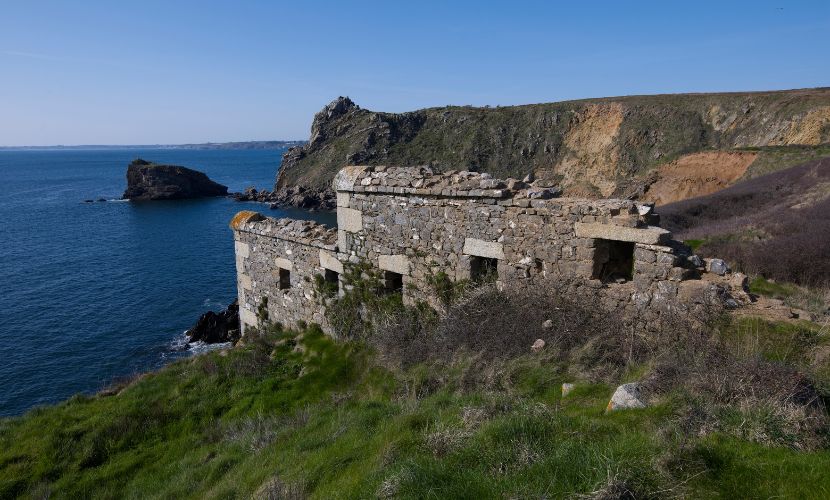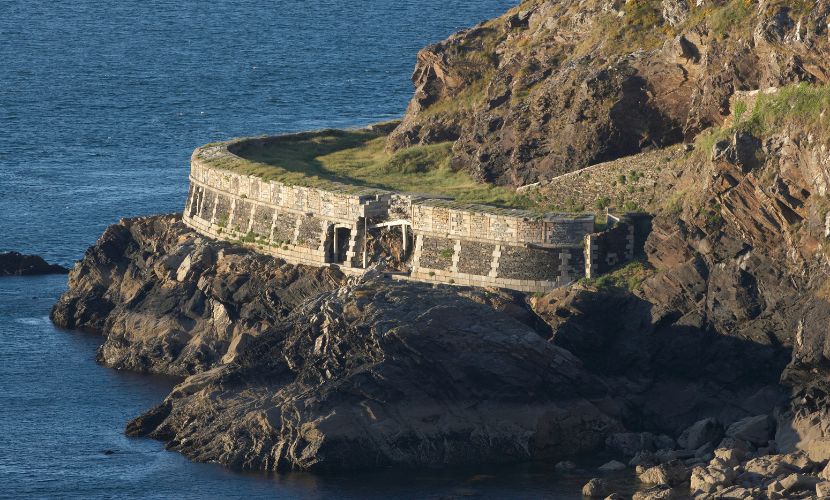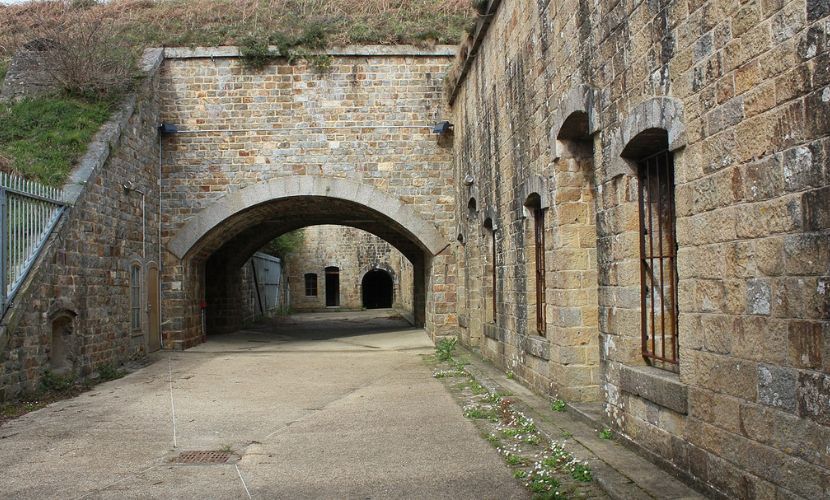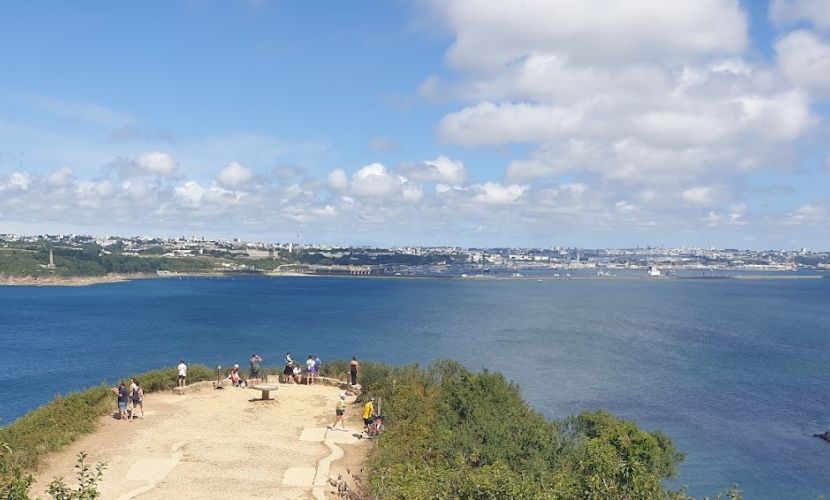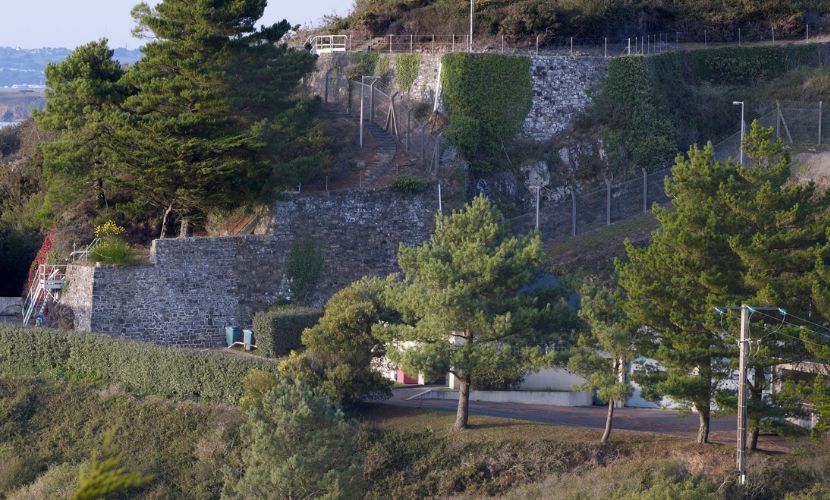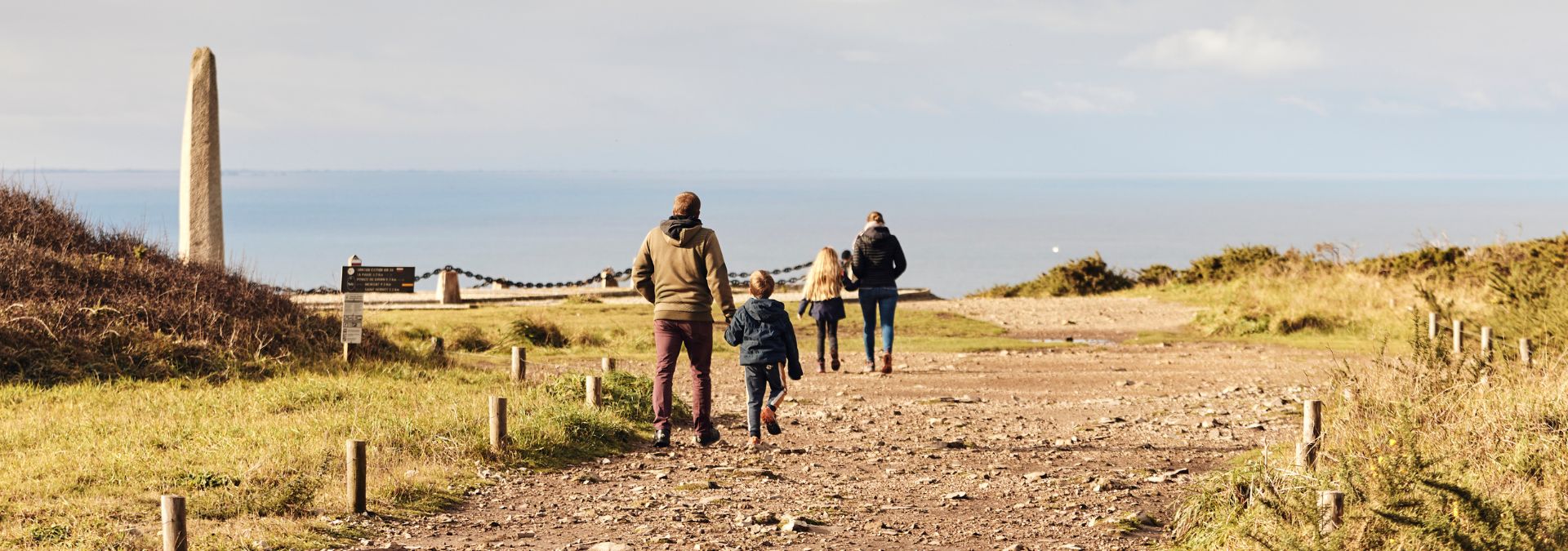
Vauban Tower
The ‘Tour Vauban’ at Camaret-sur-Mer in Finistère is one of twelve sites listed as UNESCO World Heritage Sites as part of the ‘Vauban Fortification Network’. Built in the 1600s, its main role was to watch over the narrow gully known as the Goulet de Brest and prevent any enemies from landing in the Camaret cove. The tower can be visited from April to November and during the Christmas holidays.
Capucins Fort
Located on the tiny island of Capucins at the entrance to the Goulet de Brest, Capucins Fort served as a checkpoint for Camaret Bay, with a panoramic view from Bertheaume Fort to the Pointe du Grand Gouin.
Fort du Gouin
Built in 1859, the Gouin Fortress overlooks the headland of Petit Gouin, a strategic point to the west of Camaret cove.
The Kerbonn fortifications
Here’s a truly unique site: these military fortifications are buried underground and can only be identified thanks to an opening in the roof, which served as an observation post. The site is now home to a Memorial for the Battle of the Atlantic.
Cap de la Chèvre
The military battery at Cap de la Chèvre is relatively recent, dating back to 1939, when it was commanded by the Navy, and was a highly strategic site.
The former Abbey of Landévennec
Set in a breathtaking seascape, the ruins of this ancient abbey’s fortified enclosure can testify to 1,300 years of history. Founded in the 5th and 6th centuries, the abbey is one of the oldest monastic foundations in the region.
Aber Fort
Only accessible at low tide, this fort is located on a tiny island, where there are traces of several other military installations.
Kador battery and fort
The Kador military batteries are the oldest on the peninsula, built in 1757, and while only a few traces remain, the vault is still standing. The fort itself dates back to 1861.
The Rozan feudal mound
This defensive site dates from the 10th and 12th centuries and was used to protect the lord and his vassals from attack. At that time, the sea rose and entered the Aber lands, which would have created an additional defence around the fort.
Toulinguet Tower
Toulinguet tower was built to a standard plan ordered by Napoleon I to protect the French coast from invasion. Toulinguet lighthouse is nearby.
Postolonnec fort
Located in the cove of Morgat, this fort’s main purpose was to stop enemies from anchoring in the calm waters of the cove.
Fraternity Fort
Facing the Devil’s Islet, the Fort de la Fraternité in Roscanvel was designed to protect Camaret cove from attackers and defend the creek below.
The Quelern lines
Just where Roscanvel Peninsula joins the Crozon Peninsula, defensive lines were built to block the path of any potential enemy.
Landaoudec Fort
Located on the Crozon Peninsula, Landaoudec fort is built on the remains of the third largest megalithic site in Brittany. Every summer, this former defensive fort is used as a base for the Bout du Monde music festival, providing accommodation for the organisers, stage management, press and artists.
The Pointe des Espagnols
To the north of the peninsula, the 60-metre-tall Pointe des Espagnols overlooks the entrance to the waters of Brest. The remains of military fortifications and troop accommodation can still be seen at the summit and at the foot of the coastal point.
Lanvéoc Fort
Built in 1775 at Vauban’s request, Lanvéoc Fort overlooks the whole maritime area known as the Rade de Brest. It was never used for defensive purposes and was converted into a prison during the First World War.

